 An important fact about the Stonewall uprising is that things were pretty chaotic. There were things going on inside the bar, outside the bar, and more than a few participants — at least initially — were intoxicated. Despite Craig Rodwell‘s best efforts, the riots were pretty much ignored by the press. So a lot of what we know has had to be cobbled together from a handful of eyewitness accounts. One of the most knowledgeable of those accounts comes from Danny Garvin.
An important fact about the Stonewall uprising is that things were pretty chaotic. There were things going on inside the bar, outside the bar, and more than a few participants — at least initially — were intoxicated. Despite Craig Rodwell‘s best efforts, the riots were pretty much ignored by the press. So a lot of what we know has had to be cobbled together from a handful of eyewitness accounts. One of the most knowledgeable of those accounts comes from Danny Garvin.
Danny Garvin was born on March 1, 1949. He grew up in New York, raised as a Roman Catholic by his two Irish immigrant parents — Michael Joseph Garvin and Mary Theresa Kelly Garvin. In his youth, like all of the boys of his neighborhood, he was a member of a gang — the Ramrods. Garvin’s mother died while he was very young, and he was mostly raised by his father — who returned to Ireland when Garvin was 17 years old, after enlisting his son in the United States Navy.
 Working as a Navy cook, stationed in Brooklyn, Garvin began coming out of the closet. Coming out proved quite difficult, especially given his religious upbringing. Drunk and off the base one night, Garvin sought out the only other gay man his age that he knew of — but he was soundly rejected. Reeling, Garvin attempted suicide and then called a psychiatrist who told him to admit himself to Bellevue Hospital. The Navy transferred him to St. Albans Naval Medical Hospital.
Working as a Navy cook, stationed in Brooklyn, Garvin began coming out of the closet. Coming out proved quite difficult, especially given his religious upbringing. Drunk and off the base one night, Garvin sought out the only other gay man his age that he knew of — but he was soundly rejected. Reeling, Garvin attempted suicide and then called a psychiatrist who told him to admit himself to Bellevue Hospital. The Navy transferred him to St. Albans Naval Medical Hospital.
This presented a very serious dilemma — if he talked about his actual problems with the Navy, he’d be dishonorably discharged and would make him unemployable to most reputable businesses. Finally, Garvin signed a document stating that his psychological breakdown was rooted in his mother’s early death, and he was honorably discharged. He was discharged on St. Patrick’s Day, 1967 — roughly two weeks after he had turned 18. Deciding he needed to celebrate, he ventured to the only gay bar he knew off — Julius’. When he was there, he was told about a new bar opening up around the corner: the Stonewall Inn.
 Although on his first visit, Garvin was mostly shocked to see men dancing together, he became a regular and even dated the main doorman (“Blonde Frankie“) for a time. Though he was initially living on the streets and hustling for a living — an experience he would carry with him the rest of his life — he ultimately found his way into living in what David Carter describes in his book Stonewall: The Riots That Sparked the Gay Revolution as a “gay hippie commune.” Garvin began smoking pot, and started selling LSD at Stonewall.
Although on his first visit, Garvin was mostly shocked to see men dancing together, he became a regular and even dated the main doorman (“Blonde Frankie“) for a time. Though he was initially living on the streets and hustling for a living — an experience he would carry with him the rest of his life — he ultimately found his way into living in what David Carter describes in his book Stonewall: The Riots That Sparked the Gay Revolution as a “gay hippie commune.” Garvin began smoking pot, and started selling LSD at Stonewall.
On the actual evening of the Stonewall riots, however, Garvin was not inside the bar. He’d planned to spend the night at a new gay club called Danny’s. (Like we wouldn’t all always be at any bar we could pretend was named after us, right?) He bumped into Keith Murdoch and the two went back to the commune to smoke weed and get it on. After that, they decided the night was still young and they wanted to go out dancing — and that’s when they found the riot.
By the time they got there, the crowd was attacking the police wagon and the police had barricaded themselves inside the bar. A group had ripped a parking meter out of the ground and were using it as a battering ram to get inside. Garvin jumped in, egging on the crowd, jeering at the cops, and generally protesting — but he avoided partaking in any of the violent action, partly because he considered himself a pacifist but also largely so he could avoid going to jail and thereby publicly outing himself — and ruining any chances he had at a career. He watched the infamous chorus line that had mocked the cops trying to clear the streets — and the brutality with which the police broke it up.
Like virtually everyone else involved in the riots, Garvin was changed by the experience. He became a proud activist, marching in the Christopher Street Liberation Day parades (which would later become the Pride parades we now know and love). He was a roommate to activist Morty Manford, and encouraged Manford to come out to his parents — who would then found PFLAG. In the early 80’s, Garvin gathered together a group of gays from AA to march in the Pride parade as a group called Sober Together.
Always an advocate for homeless queer youth because of his experiences on the street, Garvin became a very involved volunteer for the Ali Forney Center in New York City after it opened in 2002. But perhaps his most important role in these later years was as a witness to history — he was interviewed by David Carter for his book Stonewall: The Riots That Sparked the Gay Revolution — which was released in 2004. He began appearing in documentaries, especially about Stonewall and the gay rights movement, in 2008. Most famously he appeared in the 2010 documentary Stonewall Uprising where he summarized the importance of the riots:
“We became a people. We didn’t necessarily know where we were going yet, you know, what organizations we were going to be or how things would go, but we became something I, as a person, could all of a sudden grab onto, that I couldn’t grab onto when I’d go to a subway T-room as a kid, or a 42nd Street movie theater, you know, or being picked up by some dirty old man. You know, all of a sudden, I had brothers and sisters, you know, which I didn’t have before. There was no going back now…. We had discovered a power that we weren’t even aware that we had.“

Throughout his work as a witness to Stonewall, Garvin befriended several other “Stonewall veterans” including Martin Boyce and Tommy Lanigan-Schmidt. When President Barack Obama mentioned Stonewall, Garvin began a correspondence with him — impressing upon him the need to continue fighting for equality for the LGBTQIA+ community. In his initial letter he wrote, “I still have not gotten to dance that dance I started 44 years ago. The big joyous ‘I Am A Completely Free Gay American Dance’ yet.” Obama invited Garvin as a special guest to the White House’s Pride celebration on June 30, 2014.
However, Danny’s final years were plagued by health problems. He suffered from COPD, caused by years of smoking, and also developed liver cancer. He passed away on December 9, 2014 at 65 years old. While he may not have gotten to finish that “I Am A Completely Free Gay American Dance” that he dreamed of, his work for our community helped get all of us that much closer to it.
 Most of the people who were at the
Most of the people who were at the 
 In 1964, Rodwell returned to New York and devoted himself to activism for the “homophile” community (as we called ourselves then — I am so glad we don’t use that term anymore). He was volunteering with the Mattachine Society — using his legal name, which was a rarity in that time — and even serving as their vice president. He founded the Mattachine Young Adults organization, and was an early member of the East Coast Homophile Organizations (ECHO) — which coordinated various homophile groups from around the eastern seaboard. On September 19, he and several other notable activists including Randy Wicker, Jefferson Poland, and Renee Cafiero staged a protest against the military’s exclusion of gay service members — and the practice of dishonorably discharging those who were found out. This is officially recognized as the first organized LGBTQ+ protest in United States history (though I suspect there were some before that we just don’t acknowledge).
In 1964, Rodwell returned to New York and devoted himself to activism for the “homophile” community (as we called ourselves then — I am so glad we don’t use that term anymore). He was volunteering with the Mattachine Society — using his legal name, which was a rarity in that time — and even serving as their vice president. He founded the Mattachine Young Adults organization, and was an early member of the East Coast Homophile Organizations (ECHO) — which coordinated various homophile groups from around the eastern seaboard. On September 19, he and several other notable activists including Randy Wicker, Jefferson Poland, and Renee Cafiero staged a protest against the military’s exclusion of gay service members — and the practice of dishonorably discharging those who were found out. This is officially recognized as the first organized LGBTQ+ protest in United States history (though I suspect there were some before that we just don’t acknowledge). In 1966, Rodwell was ejected from a bar called Julius’ for wearing a pin that read “Equality for Homosexuals.” On April 21, with the help of John Timmons and Mattachine president Dick Leitsch, Rodwell held a “sip-in” at the bar. This was specifically to protest a rule by State Liquor Authority that prohibited homosexuals from gathering in places that served alcohol. Rodwell and his cohorts held that the rule encouraged bribery and corruption amongst the police. The publicity from this sit-in led directly to that particular rule ending.
In 1966, Rodwell was ejected from a bar called Julius’ for wearing a pin that read “Equality for Homosexuals.” On April 21, with the help of John Timmons and Mattachine president Dick Leitsch, Rodwell held a “sip-in” at the bar. This was specifically to protest a rule by State Liquor Authority that prohibited homosexuals from gathering in places that served alcohol. Rodwell and his cohorts held that the rule encouraged bribery and corruption amongst the police. The publicity from this sit-in led directly to that particular rule ending. In order to try make the Mattachine Society more accessible, Rodwell proposed they open a storefront. When the idea was rejected, he cut his ties with the organization. In November of 1967, Rodwell opened the Oscar Wilde Memorial Bookshop — the country’s first store that focused on queer authors. The store was so named because Oscar Wilde was the most notable homosexual he could think of and he wanted absolutely not confusion about what the store was all about. The place functioned as more than just a store — Rodwell also envisioned it as a community center that didn’t have age restrictions and didn’t rely on alcohol (or the organized crime families that owned most of the gay bars in the city). To that end, he found the Homophile Youth Movement in Neighborhoods (HYMN) out of the bookshop, and led their rallies in that year. In 1968, he started publishing their periodical HYMNAL. Harvey Milk — now friends with Rodwell — was a frequent customer of the store, and it would later be the inspiration his own shop/community center/campaign headquarters Castro Camera in San Francisco. Rodwell also met Fred Sargeant at his store. Sargeant became heavily involved in HYMN and a romantic relationship blossomed.
In order to try make the Mattachine Society more accessible, Rodwell proposed they open a storefront. When the idea was rejected, he cut his ties with the organization. In November of 1967, Rodwell opened the Oscar Wilde Memorial Bookshop — the country’s first store that focused on queer authors. The store was so named because Oscar Wilde was the most notable homosexual he could think of and he wanted absolutely not confusion about what the store was all about. The place functioned as more than just a store — Rodwell also envisioned it as a community center that didn’t have age restrictions and didn’t rely on alcohol (or the organized crime families that owned most of the gay bars in the city). To that end, he found the Homophile Youth Movement in Neighborhoods (HYMN) out of the bookshop, and led their rallies in that year. In 1968, he started publishing their periodical HYMNAL. Harvey Milk — now friends with Rodwell — was a frequent customer of the store, and it would later be the inspiration his own shop/community center/campaign headquarters Castro Camera in San Francisco. Rodwell also met Fred Sargeant at his store. Sargeant became heavily involved in HYMN and a romantic relationship blossomed. The next day, Rodwell created a flyer — which HYMN helped him to disseminate through Greenwich Village — that read “Get the Mafia and the Cops Out of Gay Bars.” The flyers helped encourage further protests the next several nights — protests Rodwell participated in as well.
The next day, Rodwell created a flyer — which HYMN helped him to disseminate through Greenwich Village — that read “Get the Mafia and the Cops Out of Gay Bars.” The flyers helped encourage further protests the next several nights — protests Rodwell participated in as well.
 In 1978 Rodwell formed Gay People in Christian Science (GPICS) with Ray Spitale, Bob McCullogh, and Bob Mackenroth. While they were not the only gay Christian Science organization in the country, they were the only one actively challenging the church’s policies — actively challenging the excommunication of three of their members. This quickly became Rodwell’s primary focus for his activism. GPICS created an eight-page pamphlet entitled “Gay People in Christian Science?” which they proceeded to mail to every Christian Science church, college organization, and practitioner that they could find. Overall, they mailed out 8,000 copies. They then made plans to hand out the pamphlets at the 1980 Annual Meeting of the Church of Christ, Scientist in Boston. To organize this in the least offensive way possible, Rodwell alerted security for the event of their intentions.
In 1978 Rodwell formed Gay People in Christian Science (GPICS) with Ray Spitale, Bob McCullogh, and Bob Mackenroth. While they were not the only gay Christian Science organization in the country, they were the only one actively challenging the church’s policies — actively challenging the excommunication of three of their members. This quickly became Rodwell’s primary focus for his activism. GPICS created an eight-page pamphlet entitled “Gay People in Christian Science?” which they proceeded to mail to every Christian Science church, college organization, and practitioner that they could find. Overall, they mailed out 8,000 copies. They then made plans to hand out the pamphlets at the 1980 Annual Meeting of the Church of Christ, Scientist in Boston. To organize this in the least offensive way possible, Rodwell alerted security for the event of their intentions.
 I wish this article was going to be longer, but I have honestly scoured the internet for more information on this person, and I have almost nothing. Nevertheless, Jackie Hormona contributed the
I wish this article was going to be longer, but I have honestly scoured the internet for more information on this person, and I have almost nothing. Nevertheless, Jackie Hormona contributed the 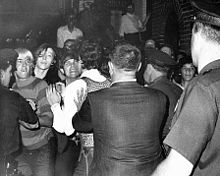

 Of all of the heroes of the LGBTQIA+ community who fought for us at the Stonewall Riots, I personally think that Sylvia Rivera may have had the most important impact on our community — however, she may also be the most controversial. Though we view her as a hero and champion for our community now, she was not always looked on so fondly.
Of all of the heroes of the LGBTQIA+ community who fought for us at the Stonewall Riots, I personally think that Sylvia Rivera may have had the most important impact on our community — however, she may also be the most controversial. Though we view her as a hero and champion for our community now, she was not always looked on so fondly.
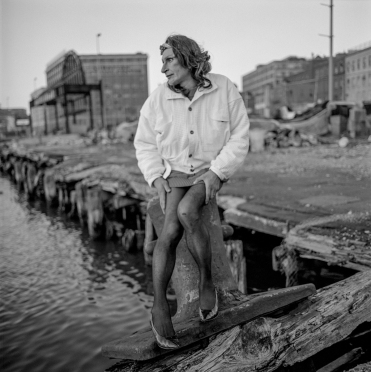 Despite her friction with many queer organizations, Rivera was an active member of the Metropolitan Community Church of New York, and often helped to feed the poor and homeless through their food pantry. In 2000, Rivera traveled to Rome, Italy for WorldPride. There she was called “the mother of all gay people” and participated in the Millenium March. In 2001, Rivera attempted to revive STAR as a political organization — changing the “T” to stand for “Transgender,” which was beginning to come into common usage. The new STAR, under Rivera’s leadership, pushed for a trans-inclusive New York State Sexual Non-Discrimination Act, as well as the New York City Transgender Rights Bill. They also fought for justice for Amanda Milan, a transgender woman who was murdered in 2000.
Despite her friction with many queer organizations, Rivera was an active member of the Metropolitan Community Church of New York, and often helped to feed the poor and homeless through their food pantry. In 2000, Rivera traveled to Rome, Italy for WorldPride. There she was called “the mother of all gay people” and participated in the Millenium March. In 2001, Rivera attempted to revive STAR as a political organization — changing the “T” to stand for “Transgender,” which was beginning to come into common usage. The new STAR, under Rivera’s leadership, pushed for a trans-inclusive New York State Sexual Non-Discrimination Act, as well as the New York City Transgender Rights Bill. They also fought for justice for Amanda Milan, a transgender woman who was murdered in 2000.
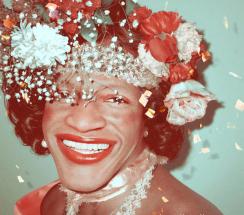 Although she regularly said her middle initial stood for “Pay it no mind”, Marsha P. Johnson proved to be a difficult person not to notice. Though Johnson is commonly referred to using female pronouns (she/her/hers) — and I’ll be doing that here — her actual gender identity is a bit of a mystery. She variously described herself as gay, a transvestite, and as a (drag) queen — though words like “transgender” really weren’t being widely used yet during her lifetime. My personal opinion is that she would probably identify as gender non-conforming or non-binary, but make your own judgments.
Although she regularly said her middle initial stood for “Pay it no mind”, Marsha P. Johnson proved to be a difficult person not to notice. Though Johnson is commonly referred to using female pronouns (she/her/hers) — and I’ll be doing that here — her actual gender identity is a bit of a mystery. She variously described herself as gay, a transvestite, and as a (drag) queen — though words like “transgender” really weren’t being widely used yet during her lifetime. My personal opinion is that she would probably identify as gender non-conforming or non-binary, but make your own judgments.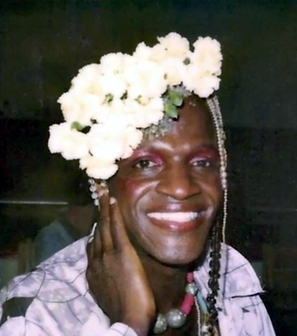 She also began to perform as a drag queen — initially going by the name “Black Marsha” before settling on Marsha P. Johnson. She was often recognizable for having flowers in her hair — something she began doing after sleeping under flower sorting tables in Manhattan’s Flower District. She usually had on bright colored wigs, shiny dresses, and long flowing robes. Marsha was known to be peaceful and fun, but there was a violent and short-tempered side to her personality (which her friends commonly called “Malcolm”) — leading some to suspect that she suffered from schizophrenia. Between her sex work and her occasional violent outbursts, Johnson claimed to have been arrested more than a hundred times.
She also began to perform as a drag queen — initially going by the name “Black Marsha” before settling on Marsha P. Johnson. She was often recognizable for having flowers in her hair — something she began doing after sleeping under flower sorting tables in Manhattan’s Flower District. She usually had on bright colored wigs, shiny dresses, and long flowing robes. Marsha was known to be peaceful and fun, but there was a violent and short-tempered side to her personality (which her friends commonly called “Malcolm”) — leading some to suspect that she suffered from schizophrenia. Between her sex work and her occasional violent outbursts, Johnson claimed to have been arrested more than a hundred times.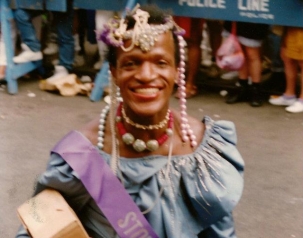 In 1973, Johnson also performed with the Angels of Light drag troupe — taking on the role of “The Gypsy Queen” in their production of “The Enchanted Miracle”. That same year both Johnson and Rivera were banned from participating in New York’s gay pride parade — the committee organizing the parade felt that drag queens and transvestites brought negative attention and gave the cause “a bad name.” In response, Rivera and Johnson marched ahead of the beginning of the parade.
In 1973, Johnson also performed with the Angels of Light drag troupe — taking on the role of “The Gypsy Queen” in their production of “The Enchanted Miracle”. That same year both Johnson and Rivera were banned from participating in New York’s gay pride parade — the committee organizing the parade felt that drag queens and transvestites brought negative attention and gave the cause “a bad name.” In response, Rivera and Johnson marched ahead of the beginning of the parade.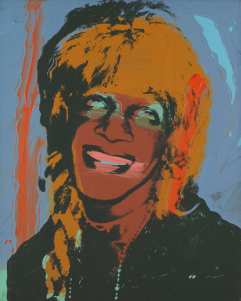 In 1975, Andy Warhol took pictures of Johnson for his “Ladies and Gentlemen” series. Johnson’s success as an activist and a performer, as well as her regular appearances throughout the decade, earned her the nickname “Mayor of Christopher Street.”
In 1975, Andy Warhol took pictures of Johnson for his “Ladies and Gentlemen” series. Johnson’s success as an activist and a performer, as well as her regular appearances throughout the decade, earned her the nickname “Mayor of Christopher Street.”


